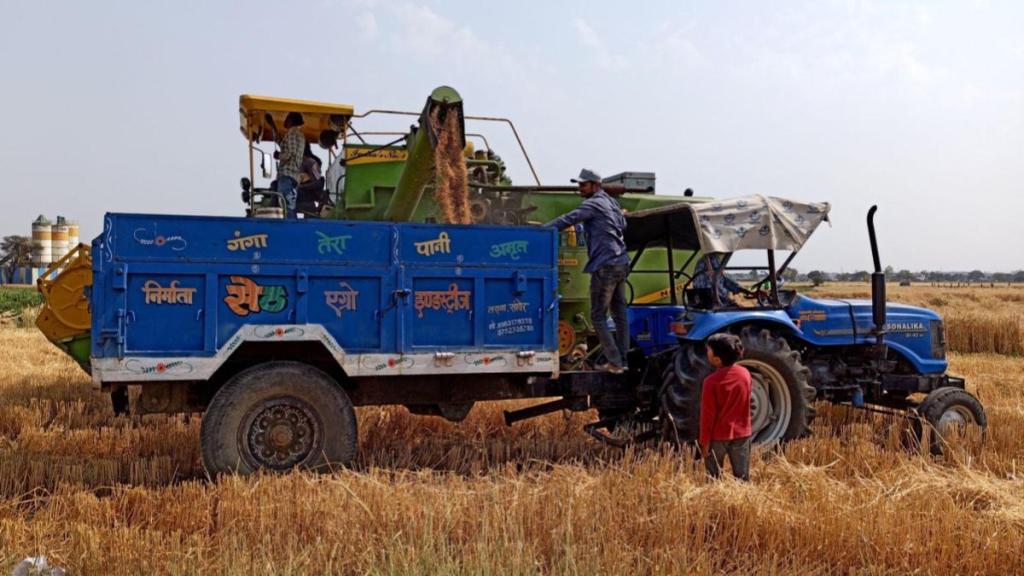Let me start by wishing readers of this column a very happy, peaceful, and prosperous new year.
What could I wish for Indian agriculture, a subject that has been my lifelong passion and commitment? My dream would be to see vibrant and sustainable agriculture which is climate-resilient, increases productivity, brings prosperity to peasants, and, above all, improves the real wages of farm workers who are literally at the bottom of the economic pyramid. It is only by raising productivity that India can rein in food inflation, which has been playing spoilsport lately. Vegetable inflation, at 29% (and potato inflation of 67%) in November 2024, has humbled the Reserve Bank of India (RBI), not allowing it to reduce the repo rate. That is simply tragic.
The India Meteorological Department has made it clear that 2024 was the warmest year since 1901, and the temperatures were 0.9°C higher in 2024 than the long period average. Earlier studies by scientists of the Indian Council of Agricultural Research predicted that an increase in temperature by 1°C ran the risk of reducing wheat output by 5%. Wheat is likely to be the most impacted by heat spikes in February when grain formation is taking place.
Although the Prime Minister released 109 varieties of various crops (including wheat) that are supposed to be climate-resilient, the challenge of taking them from the scientists’ labs to farmlands remains daunting. This is because the government’s agri-extension network is the weakest link in the production system.
Agri-R&D as well as agri-extension need a major boost in the coming Budget if Indian agriculture is to be climate-resilient. In this context, it may be noted that in the last three years or so, there is a wide gap in the government estimates of wheat production and what the private trade believes. No wonder wheat prices have been under pressure, and government stocks meagre. The government is trying to supress prices by releasing wheat at about Rs 2,300/quintal in the open market operations, while the minimum support price for the forthcoming season is Rs 2,450/quintal, and the economic cost to the Food Corporation of India is about Rs 2,800/quintal. This is simply dumping and anti-farmer.
PM Narendra Modi wants to transform India into Viksit Bharat by 2047, but this cannot be achieved unless farmers’ and farm workers’ incomes improve significantly. We cannot have India sprinting when its feet are made of clay. The Periodic Labour Force Survey clearly shows that the real wages in rural areas (including farm wages) have stagnated and even marginally declined in the last five years. This should have been the primary topic of constructive discussion in Parliament and mainstream media as it impacts the lives of millions. Instead, our Parliament was paralysed over a remark on Ambedkar. What a pity!
If India wants to realise the dream of Viksit Bharat, we need to find business models that make our development process more inclusive. So far, we have not been very successful in that. And when we fail to do it, we lean towards the revdi culture of freebies, which runs through all political parties — be it in the name of ladli behna or ladli ladki, as was the case in Maharashtra’s recent Assembly elections. Even now, the Aam Aadmi Party is promising to give Rs 18,000 a month to pujaris and granthis if they are voted back to power in Delhi. India cannot progress with such doles, nay bribes, for votes. As honest taxpayers, we wonder how our money is being frittered away. I wonder why our Election Commission is silent on such ludicrous promises. Will the Supreme Court step in to bring some order among political parties on election promises that are damaging our democracy? Most of these are a waste of taxpayers’ money, who feel helpless and cheated having paid their due.
Coming back to reforming agriculture, politically, for the Modi government at the Centre, 2025 seems a golden chance as the parliamentary elections are far away. The big expenditures in rural areas, including agriculture, are going from the central Budget. Look at food and fertiliser subsidies. Both together are likely to cross Rs 4 lakh crore. Add to it the Pradhan Mantri Kisan Samman Nidhi (PM-Kisan) and Mahatma Gandhi National Rural Employment Guarantee Act (MGNREGA), and one would easily cross Rs 5 lakh crore out of a Budget of about Rs 45 lakh crore (FY25). All these need to be rationalised, and one can easily save at least Rs 1 lakh crore that can be invested back in agriculture and rural areas for building basic infrastructure, ranging from roads and water harvesting to upgrading agri-mandis and rural haats.
But how do we rationalise these mega subsidies and so-called welfare programmes? The fertiliser subsidy needs to be merged with PM-Kisan and given to farmers directly on a per hectare basis, while fertiliser prices need to be deregulated and freed. Micro-managing prices for each urea plant, and then informally controlling even di-ammonium phosphate prices, when in theory they are relatively free, is reminiscent of the socialist era of the USSR. The timidity of successive governments is reflected in the fact that urea prices have not been revised since 2012, while all other commodity prices have gradually risen. This is not helping either the peasantry, productivity, or the planet, as it is leading to inefficient use and massive diversions.
Similarly, food subsidy must be targeted and given in the form of digital coupons to be spent on, say, 20 nutritious food items. The MGNREGA needs to be dovetailed with agri-work and PM Awas Yojana. The whole system needs an overhaul. It can be done if the Modi government is bold and remains focused. Else, I am afraid, India will keep limping with occasional falls and injuries in its race to Viksit Bharat by 2047.
The author is a distinguished professor at ICRIER.
Disclaimer: Views expressed are personal and do not reflect the official position or policy of FinancialExpress.com. Reproducing this content without permission is prohibited.


